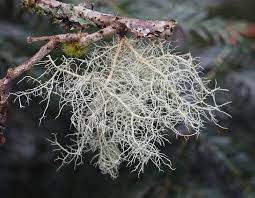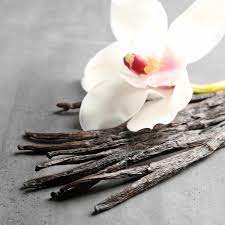Disclaimer: This Materia Medica is provided for informational purposes only and should not replace professional medical advice. Please consult with a qualified healthcare practitioner or herbalist before using any herbal remedies.
Usnea Materia Medica
Common Name: Usnea Botanical Name: Usnea spp. Family: Parmeliaceae
Introduction: Usnea, often referred to as “Old Man’s Beard” due to its long, hair-like appearance, is a fascinating and valuable lichen in the realm of herbal medicine. It has been used for centuries by various cultures worldwide for its remarkable medicinal properties. Usnea is commonly found in forests, on trees, and in other damp and wooded environments. As a professional herbalist, it is essential to understand the diverse applications of Usnea in herbal medicine. This comprehensive materia medica will provide insight into its botanical characteristics, therapeutic actions, medicinal uses, dosage, and safety considerations.
Botanical Description:
- Usnea is a lichen, not a true moss or plant, and is a symbiotic organism consisting of a fungus and an alga.
- It forms long, thread-like structures that can vary in color from gray-green to silver-gray.
- The appearance of Usnea resembles a beard or hair, often hanging from branches, rocks, or other surfaces.
- It can range in size from a few inches to several feet long.
- Usnea produces small, cup-shaped fruiting bodies that contain reproductive spores.
Constituents: Usnea contains a variety of compounds, including:
- Usnic acid: The primary active compound responsible for many of its medicinal properties.
- Lichen acids: A group of secondary metabolites with antibiotic and antimicrobial properties.
- Polysaccharides: Contributing to its immune-enhancing actions.
- Flavonoids: Antioxidant compounds that support overall health.
Therapeutic Actions:
- Antimicrobial:
- Usnic acid exhibits potent antibacterial and antifungal properties, making Usnea an effective remedy against various infections.
- It is particularly useful for respiratory infections, urinary tract infections, and skin infections.
- Immunomodulatory:
- Usnea helps modulate the immune system, enhancing the body’s natural defenses against pathogens.
- It is often used to support the immune response during illness and prevent recurrent infections.
- Expectorant:
- Usnea can help ease respiratory congestion by promoting the expulsion of mucus from the airways.
- It is valuable in cases of bronchitis, colds, and other respiratory conditions.
- Anti-inflammatory:
- Usnea can reduce inflammation, making it beneficial for conditions like sore throats, swollen lymph nodes, and arthritis.
- Antioxidant:
- The flavonoids in Usnea help protect cells from oxidative damage, supporting overall health and longevity.
Medicinal Uses:
- Respiratory Infections:
- Usnea is highly effective against respiratory infections like bronchitis, pneumonia, and sinusitis.
- It can be used as a tincture, infusion, or throat lozenge to soothe symptoms and promote recovery.
- Urinary Tract Infections:
- Usnea’s antimicrobial properties make it a valuable addition to treatments for urinary tract infections (UTIs).
- It can be used internally as a tea or tincture and externally as a wash.
- Skin Infections:
- Usnea creams or salves can be applied topically to treat fungal and bacterial skin infections, such as ringworm and impetigo.
- Immune Support:
- Usnea can be taken preventatively during cold and flu season to bolster the immune system.
- It may also be used to support the immune system during chronic illnesses or after surgery.
Dosage:
- Tincture: 30-60 drops (1.5-3 mL) up to three times daily.
- Infusion (tea): 1-2 teaspoons of dried Usnea per cup of boiling water, steeped for 10-15 minutes. Drink up to three cups daily.
- External applications (creams, salves, washes) as needed.
Safety Considerations:
- Usnea is generally safe when used as directed, but excessive consumption should be avoided.
- Pregnant and breastfeeding individuals should consult a healthcare provider before use.
- Allergic reactions are rare but possible; discontinue use if any adverse reactions occur.
- Usnea is slow-growing, and sustainable harvesting practices should be followed to protect its populations.
Conclusion: Usnea is a valuable addition to the herbalist’s toolkit, offering potent antimicrobial, immunomodulatory, and anti-inflammatory properties. Its versatile applications make it a go-to remedy for various infections, respiratory conditions, and immune support. However, it is essential to approach its use with respect for its slow growth and sustainability, ensuring that this remarkable lichen remains available for generations to come. Always consult with a qualified herbalist or healthcare provider for personalized guidance on its use.






